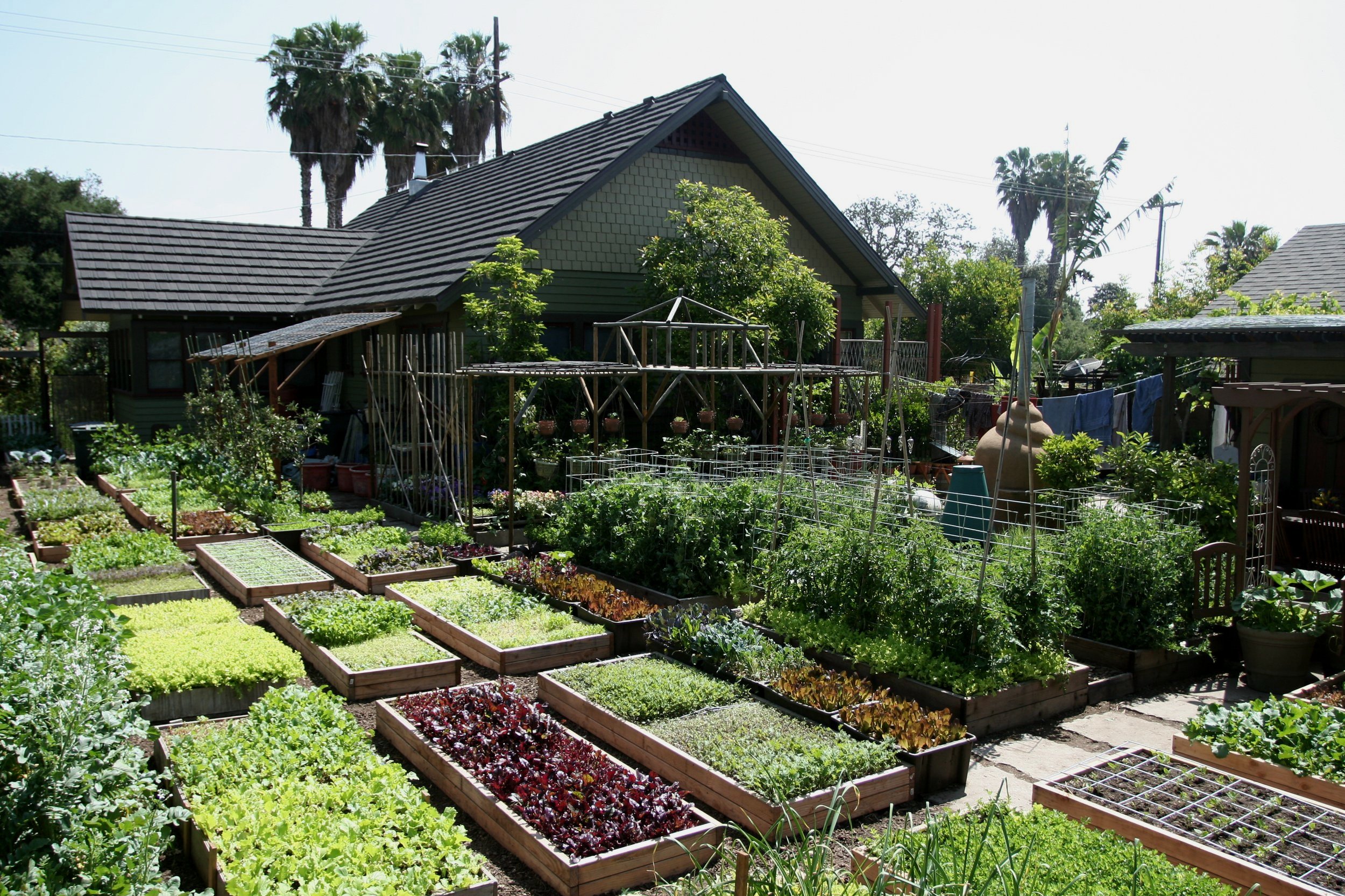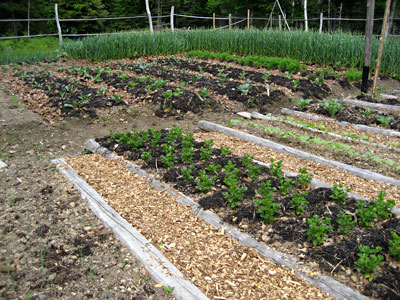How to Maintain Healthy Soil in Homestead Gardening
How to Maintain Healthy Soil in Homestead Gardening
Blog Article
Enhance Your Outdoor Area With Creative Gardening Styles and Styles
By checking out numerous styles, such as the captivating informality of cottage yards or the minimalism of contemporary appearances, one can substantially boost the setting of their environments. Furthermore, including upright horticulture methods and sustainable methods not just enhances aesthetic appeal yet additionally advertises environmental awareness.

Home Yard Appeal
Cottage yards, typically defined by their lavish, casual layouts, accept an unified mix of veggies, flowers, and herbs, developing a vibrant tapestry of color and scent. This standard horticulture style go back to the late 19th century, coming from England, and is treasured for its lovely, romantic allure.
Crucial element of cottage yards include the use of perennial plants, climbing up creeping plants, and self-seeding annuals, which add to an ever-evolving landscape. Planting in thick collections motivates a naturalistic appearance, permitting a diverse mix of colors and structures. Popular blossoms such as hollyhocks, foxgloves, and delphiniums intermingle with fragrant herbs like lavender and rosemary, enhancing sensory experiences while promoting biodiversity.
Including rustic features, such as weathered trellises, wood fences, or rock paths, better enhances the aesthetic of a home garden. This style not only focuses on beauty however likewise embraces sustainability, as many plants are picked for their capacity to bring in pollinators and offer food. Eventually, the home yard beauty hinges on its loosened up, inviting ambience, encouraging a deep link with nature while supplying a picturesque retreat for leisure and pleasure.
Modern Landscape Aesthetic Appeals
While the beauty of cottage yards stimulates a feeling of fond memories and fancifulness, modern-day landscape aesthetic appeals welcome a more minimalist and structured approach. This contemporary style stresses simpleness, functionality, and an assimilation with the surrounding atmosphere. Clean lines, geometric forms, and a minimal color scheme define contemporary landscape design, permitting nature's charm to take facility stage without unnecessary distractions.
Materials play a critical function in accomplishing this visual. Concrete, steel, and natural stone are regularly used to develop hardscapes that enhance the landscape as opposed to overwhelm it. Furthermore, the cautious selection of plants is basic; ornamental grasses and native species are often favored for their low maintenance and capability to flourish in local conditions.
Water functions, such as streamlined fish ponds or reflecting pools, are likewise essential to modern-day styles, giving peacefulness and a centerpiece. Lasting methods, consisting of xeriscaping and making use of absorptive materials, boost the ecological duty of modern landscape design. Ultimately, contemporary landscape appearances provide an opportunity to create serene outside spaces that mirror contemporary values while fostering a deeper link to nature.
Vertical Horticulture Technologies
Upright horticulture innovations have actually transformed the means we come close to horticulture in limited spaces, enabling the cultivation of plants in urban atmospheres where ground room is limited. These ingenious strategies and structures enable gardeners to make the most of vertical surface areas, transforming walls, fences, and also balconies into lush environment-friendly areas.
One noticeable innovation is the usage of modular systems, which are composed of interlacing panels that can be conveniently mounted and reorganized - Homestead Gardening. These panels often come equipped with integrated irrigation systems, ensuring that plants get adequate dampness while reducing water waste. Additionally, vertical gardens can include a range of plants, from blooming species to edible natural herbs, advertising biodiversity and boosting aesthetics
Another significant improvement is the integration of clever modern technology, such as sensing units that keep an eye on dirt dampness and nutrient degrees. This modern technology enables specific care customized to the demands of individual plants, ensuring ideal growth and health. Upright planters and lightweight materials made from recycled items add to sustainability while decreasing the physical concern of traditional horticulture.
Sustainable Horticulture Practices
Lasting gardening practices have become a vital technique for gardeners seeking to lessen their ecological influence while improving the health and wellness of their communities. These practices concentrate on the careful monitoring of natural deposits, promoting biodiversity, and cultivating a resistant landscape.
One crucial element of lasting gardening is dirt health and wellness. Making use of natural garden compost, mulching, and plant rotation improves the dirt, promoting beneficial bacteria and reducing the demand for chemical plant foods. Additionally, indigenous plants are encouraged, as they call for less water and are extra immune to local pests, hence lowering reliance on chemicals.

Moreover, sustainable gardening encourages using Go Here recycled products for garden frameworks and paths, decreasing waste and ecological effect. By adopting these practices, gardeners can produce a successful outdoor space that balances with nature, ensuring both personal pleasure and eco-friendly duty.
Themed Yard Inspirations
Producing a themed yard can transform an average outdoor room into a fascinating shelter that reflects personal style and passions. Themed yards provide a distinct chance to share creative thinking while enhancing the aesthetic appeal of one's landscape. Popular motifs include Japanese Zen gardens, which stress tranquility via carefully organized stones, water attributes, and minimal plantings.
An additional motivating theme is the cottage yard, characterized by a casual layout filled up with a wealth of aromatic natural herbs and colorful blossoms. This style promotes biodiversity and attracts pollinators, making it both lovely and ecologically valuable.
For those with a fondness for experience, a tropical yard can evoke a holiday feeling, featuring strong vegetation, vivid blooms, and perhaps also a little water feature to resemble a hotel ambience.
Additionally, a themed yard can draw motivation from literary works or background, such as a Shakespearean yard that integrates plants stated in the Poet's jobs.
Selecting a motif not just offers instructions in plant selection and layout but also creates a more tips here cohesive environment that welcomes expedition and enjoyment, making exterior spaces genuinely one-of-a-kind.
Conclusion

Incorporating rustic attributes, such as weather-beaten trellises, wood fencings, or rock paths, additionally improves the aesthetic of a cottage garden. In addition, upright yards can integrate a selection of plants, from flowering varieties to edible herbs, promoting biodiversity and boosting visual appeals.
Producing a themed garden can change a normal exterior area right into a captivating refuge that mirrors personal style and passions. Themed yards provide an unique possibility to express creativity while improving the discover this aesthetic allure of one's landscape. The charm of cottage gardens, the sleekness of modern-day landscapes, ingenious upright horticulture strategies, sustainable practices, and themed gardens each contribute one-of-a-kind aspects that promote both elegance and functionality.
Report this page